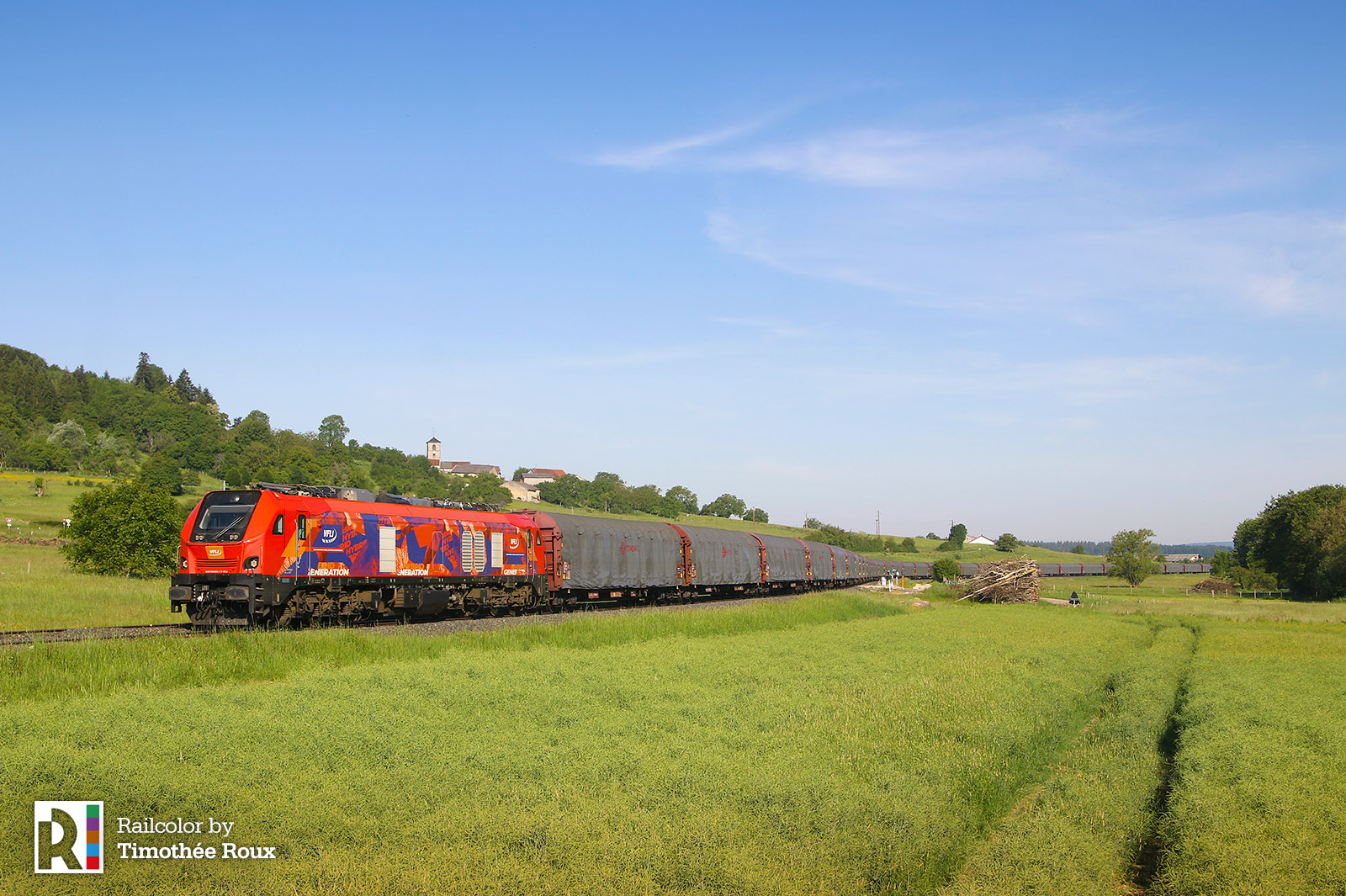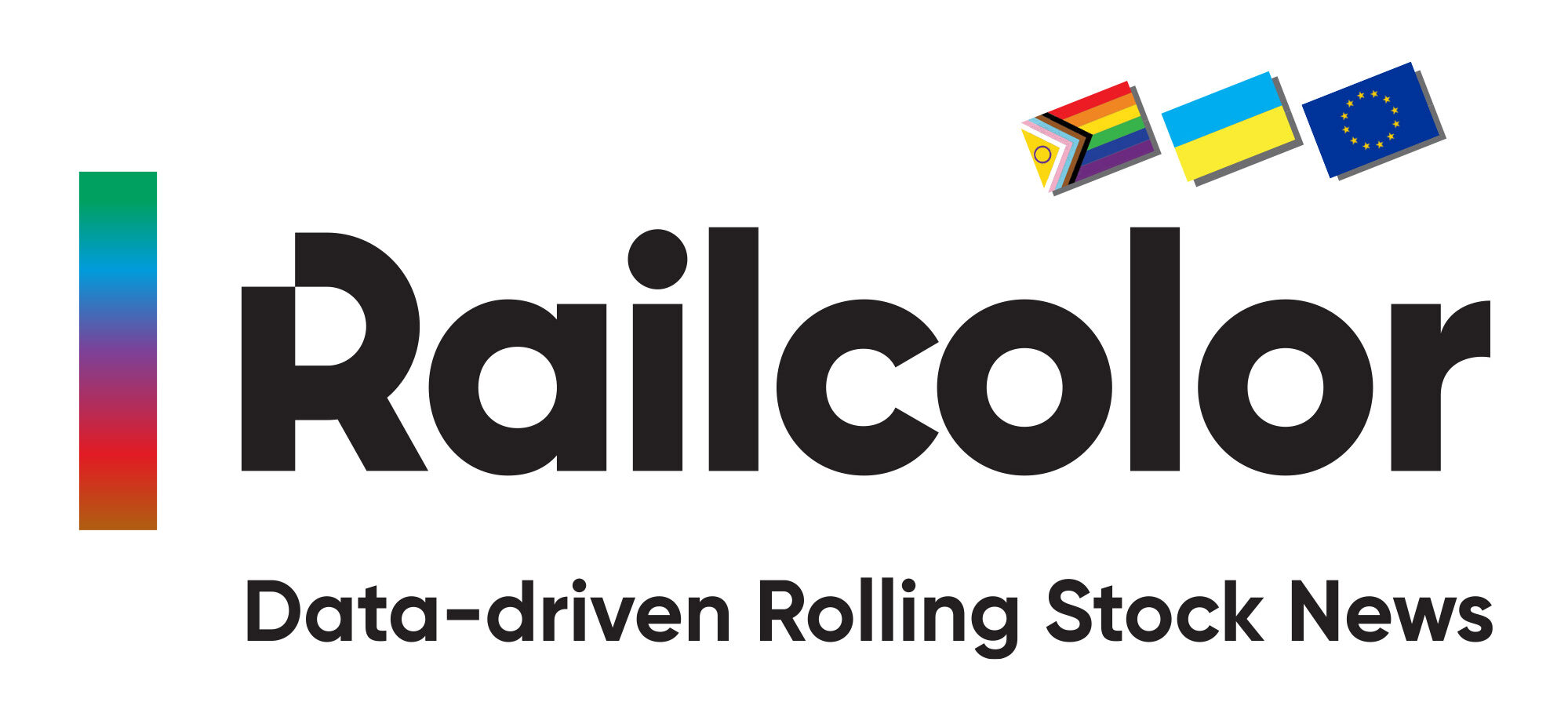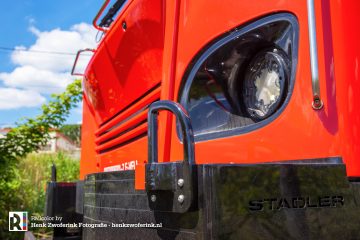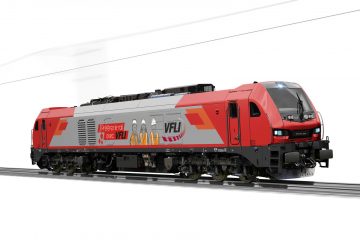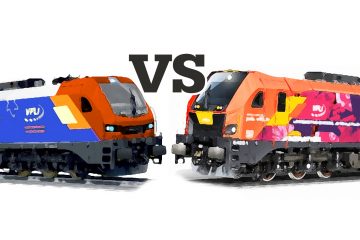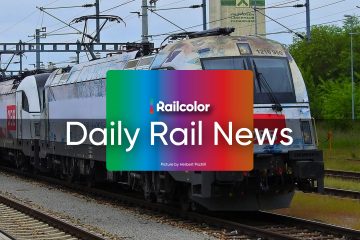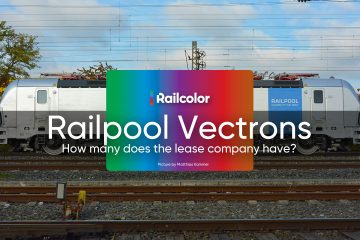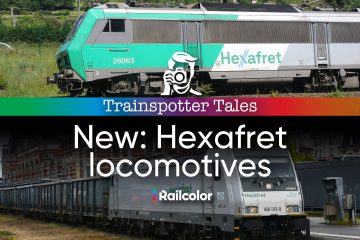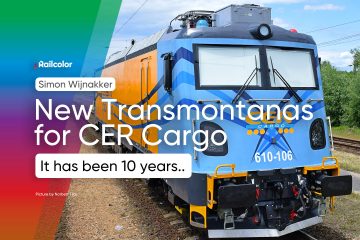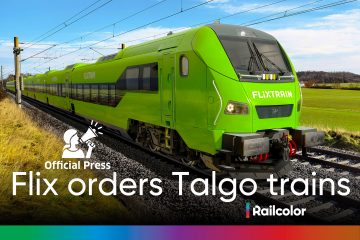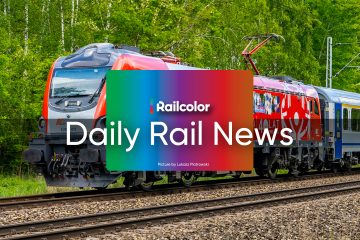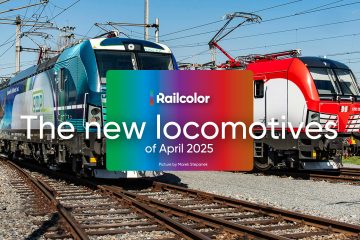Last year, Railcolor got in contact with Léo Monnet, a Franco-Swiss graphic designer who won the design contest launched by VFLI for its unique EuroDual locomotive. We talked to him and he explained how his winning design came to be. But first, a brief insight.
A unique locomotive enters service
On 26.10.2019, French rail freight operator Voies Ferrées Locales et Industrielles (VFLI), a subsidiary of French state operator SNCF, put the very first Stadler EuroDual bi-mode locomotive in operation. The locomotive is dedicated to transporting water between the two french towns of Vittel and Arles.
VFLI needed a bi-mode machine for this route as it is only partly electrified. The EuroDual runs on diesel mode over the 35 km between Vittel and Merrey, and then switches to electric mode for the rest of the journey, 565 km from Merrey to Arles.
VFLI operates three 33-wagon (682 m) trains per week, amounting to 150 trains per year. The Co-Co locomotive produces 7000 kW of power in electric mode, and 2800 kW in diesel mode. The electric powertrain is from ABB, and the diesel prime mover from Caterpillar.
As well as being unique due to it being the only EuroDual in the VFLI fleet, this locomotive, numbered 6001, is also unique because it sports a dedicated livery. The design, which promotes the eco-friendliness of the new “hybrid” locomotive, is the result of a competition of designers. The winning designer, who got to create the new livery for 6001, is Léo Monnet. He recently sent us the story of the creative process behind the EuroDual’s livery, which we are now presenting to you:
The designer speaks:
My name is Léo Monnet, I’m a franco-swiss graphic designer and student. I was lucky to have the opportunity to create the visual identity of the new Stadler EuroDual locomotive that VFLI, the third rail freight operator in France, has recently bought. It was quite a crazy project for a student like me, which will forever be engraved in my professional path.
The mission was to create a livery for the first VFLI EuroDual, while putting forward the ecological merits of the new locomotive. When investing in this new machine, VFLI wanted to work towards a new, greener generation of rail freight.
The creative process
In November 2018, my school received the project. Each student suggested a design, and I ended in the finale against a friend of mine. As it was a project that I really enjoyed, I really invested myself into it. I applied my creative principle in a way that follows.
Universe & Inspiration
I focused on the universe and the identity of VFLI. The company has an industrial background, but the firm’s annual new year videos really caught my attention. From there, I withdrew an axis oriented towards performance, an aspect that can be identified easily when watching these videos. Images went through my head, for example, the fluo orange graphics of the Porsche 911 Hybrid Performance car that I had the opportunity to see a few years prior, during an auto show.

My concept and proposal were thus put in place around this notion of performance and ecology. Ecology and efficiency, two compatible aspects for a locomotive. I didn’t want to lose myself in the very cliché aspect of eco-friendliness, with a basic design based on green, yellow, and leaves too easy to recognize, for example. I wanted something fresh, modern, and visible.
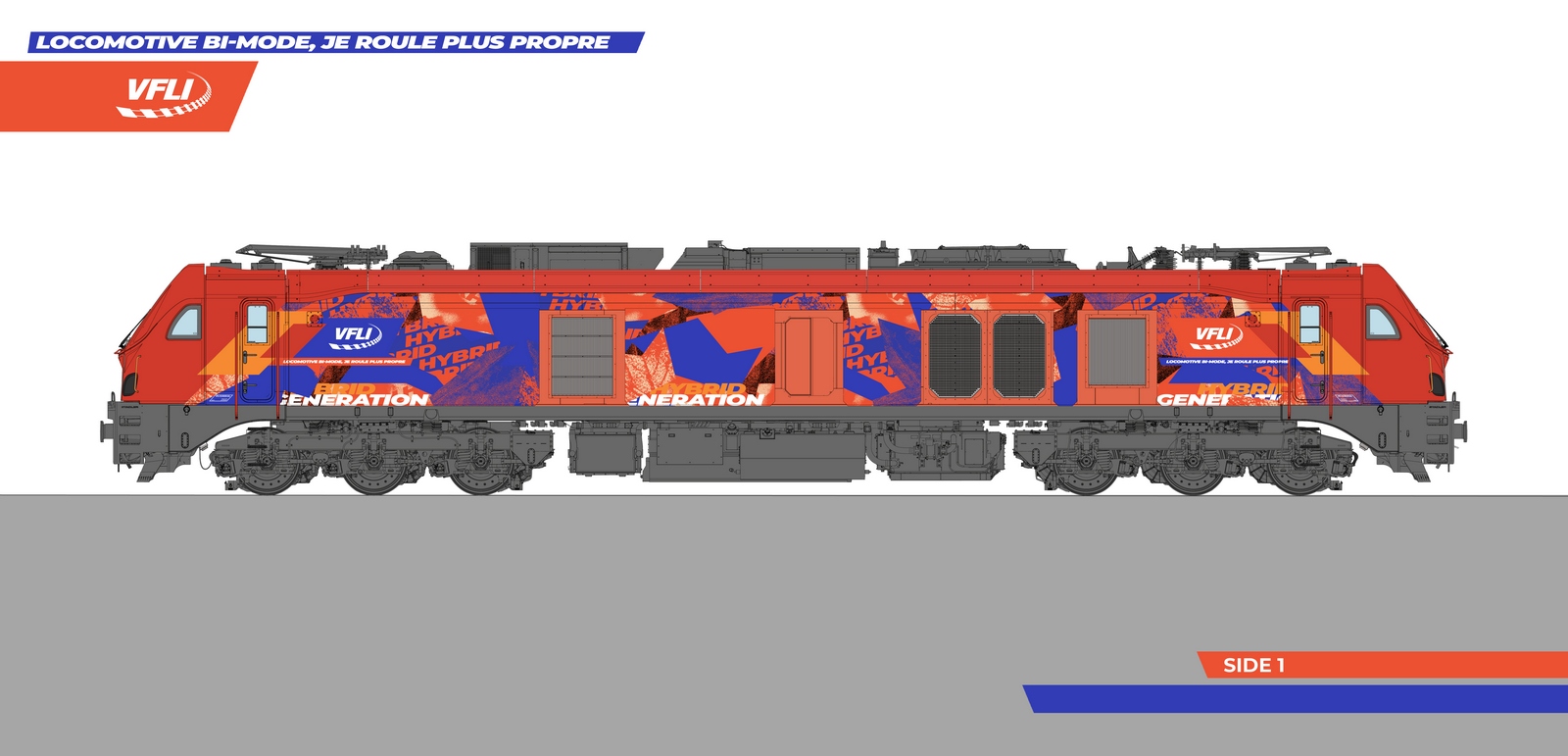
The ‘Dazzle’
I turned towards the idea that a locomotive, through its reduced carbon footprint, blends in the scenery that it runs through every day. I instantly thought of military camouflage, and the one that caught my interest the most is the Dazzle, which features geometrical shapes that I could use to transcribe the electric-hybrid aspect of the EuroDual, with these shapes as electricity flashes.
I started working with a natural pattern that could put forward the eco-friendliness of the machine through the graphic texture of a leaf, and reusing certain aspects of rail transport like graffiti, a wink towards this universe often seen as negative.

Two different sides
To strengthen the concept of the bi-mode locomotive itself and use this as a design feature, I had the idea to create two different colour bases, one for each side of the locomotive. The colours represented a lengthy process to answer VFLI’s requests.
I started my work with the colours green and fluorescent yellow for the electric aspect, but the operator wanted two colours closer to their visual identity. I found myself with a reduced chromatic circle which made my work harder, especially to find contrasting colours. I stayed on my initial idea of using fluorescent colours to represent the hybrid technology, working with orange and purple, two colours close to VFLI’s visual identity.
A lengthy process
After winning the competition, a lengthy process got underway to end up with a final version of the livery. Working on such a large format (23 meters long) was a first for me. I found it was important to suggest a global design for the EuroDual.
I wanted to adapt the livery to the design and the shapes of the locomotive, but I also wished to use the livery against the design of the machine on several occasions, by breaking some design elements of the body. For example, the red upper part of the locomotive adapts itself to the shape of the unit, whereas near the driving cabs, a diagonal break takes shape (the red frontal section).

This enables the livery to display at the same time harmony and dynamism. Previously, I had a few professional experiences with Marty Design, a Swiss customization company that works mainly on the graphic design of helmets for bikers, F1 drivers, and skiiers, and this has enabled me to take this aspect of design into account in my work.
Like a dream come true
I experienced a few difficulties with the creation of the print files, especially surrounding the textures done by hand on sheets with a diameter of less than 10 centimeters. As these textures measured more than a meter on the locomotive, a quality issue appeared, due to the difference in size. I had to make several scans of the textures at more than 300 DPI (dots per inch), the norm in the printing industry, so I pushed the values to 1600 DPI, 4K, but this created files that were very big and tough to handle by software.
A second difficulty was that I had to take into account some technical aspects and parts of the EuroDual for the real-life creation, for example, the grilles. I had to reduce the size of the message several times due to theses grilles [which are to this day unpainted and white, translator’s note].
Application of the wrap
At the beginning of May 2019, VFLI invited me over to see the application of the livery wrap, and to discover the machine in person. It was a superb experience that enabled me to admire my work and compare the project works with real-life, full-scale result, which is exactly identical to what I had planned.
The colours are punchy, and the quality of the textures and the printings are perfect. I am proud of the final result and the work that was done by everyone involved, especially the team which did a great job in the application of the wrap.

6001, a unique machine
The project took place over approximately a year. I hope to see the locomotive in person again soon, to have another good close look at it. Railfans, please do not hesitate to send me your photographs of the machine, it is always a pleasure to see it on Instagram.
